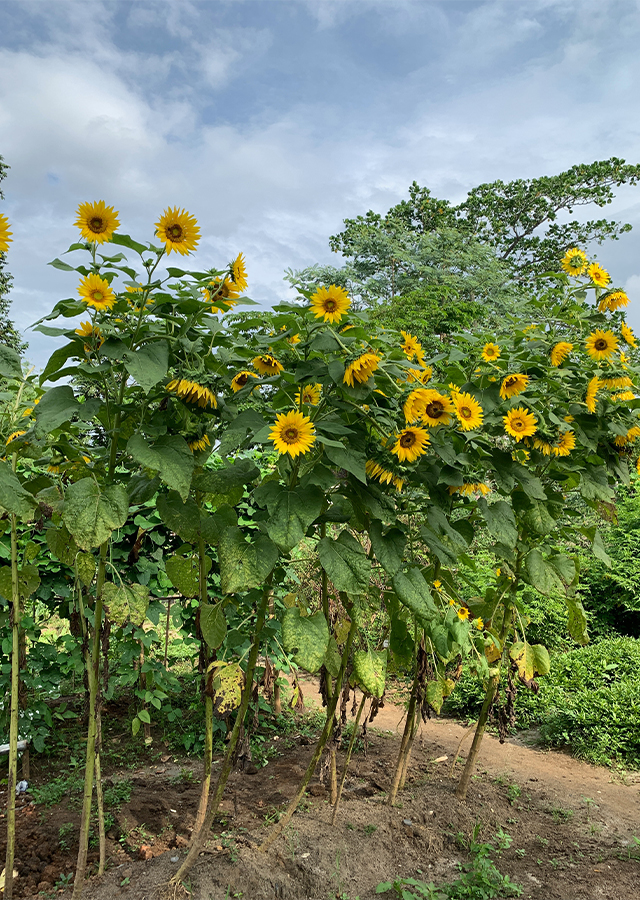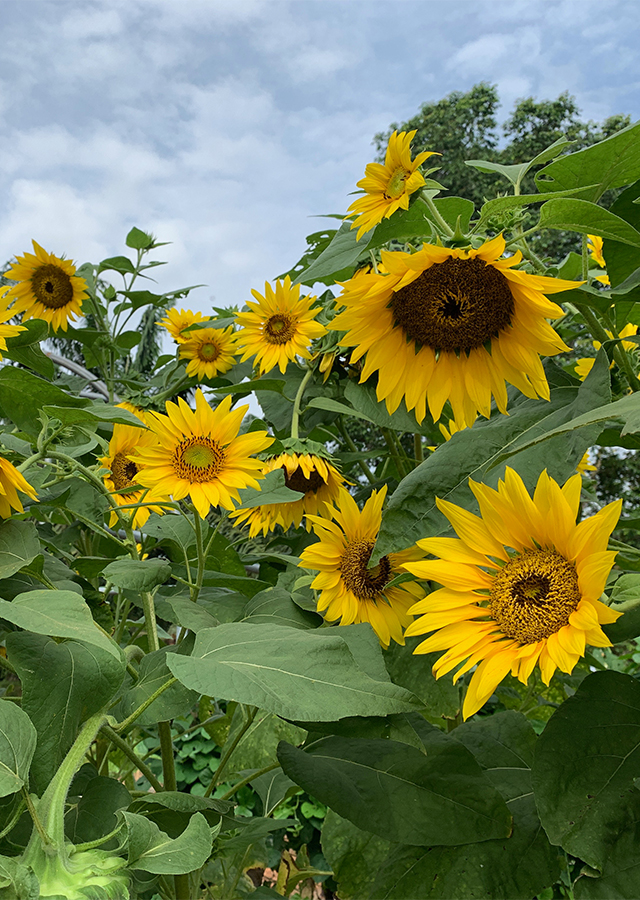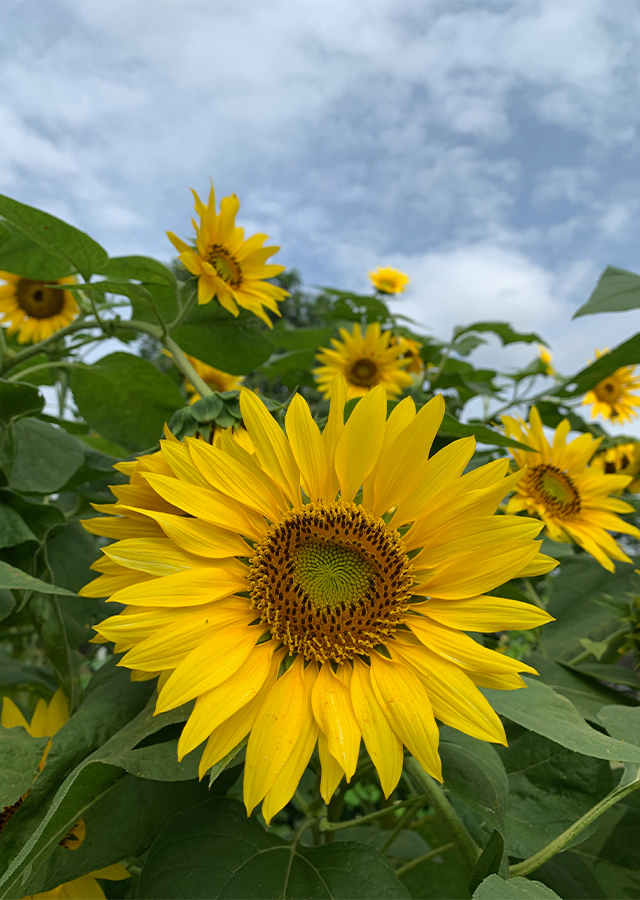Sun flower
Helianthus annuus L.
Asteraceae
Location in our garden
Vegetable



Synonym
Helianthus aridus Rydb.
Helianthus erythrocarpus Bartl.
Helianthus indicus L.
Habitus
Herbaceous. An erect, usually unbranched, annual herbs, can grow from 1-3 m
Part Used
Leaves
Seeds
Growing Requirements
Full Sunshine
Need Shade
Habitat
Roadside
Grassland
Overview
Sunflower is indigenous to the Americas—North America and Mexico. Its cultivation was widespread in Mexico and extended as far South as El Salvador by the first millennium B.C It is a major commercial crop, mainly local uses including a source of medicines, fibre, dyestuff, oil, and green manure.
Vernacular Names
Kui hua (Chinese), Grand soleil (French), Hoa mặt trời (Vietnamese), DtôN bua tong (Thai), Himawari (Japanese), Hae ba ra gi (Korean), Beliphul (India), Mirasol (Philippines), Abbâd esh shams (Arabic), and Girassol (Brazil).
Agroecology
Sunflower grows best in full sun and is insensitive to day length. It will grow in a wide range of temperatures 17–33 °C. Sunflower prefers a mild temperature regime and is grown in many semiarid regions of the world at 0–3,000 m altitude. It is adaptable to a wide range of soils but is not highly drought tolerant. They grow best in fertile, moist, well-drained soil with heavy mulch.
Morphology
- Roots - tap root, large lateral spread of surface roots.
- Stems - green and fleshy, usually hispid.
- Leaves - large, mostly cauline, alternate on petioles 2–20 cm long, lamina cordate to ovate, 10–40 by 5–40 cm.
- Flowers - usually produces a single, large yellow flower head at the top of the stem.
- Seeds - achene (dry one-seeded fruit) 3–15 mm, glabrate, dark grey with white stripes.
Cultivation
- Propagated by seed - sow in situ. Germination takes 5-10 days.
- The plant is ready for harvesting when the heads have turned yellow-brown and about 120-160 days after planting for tall, and 80-110 days for short cultivars.
- The growth cycle is usually about 120 days.
Chemical Constituents
- Flowers: quersimenitin (flavon glikoside), helianthoside A-B-C, oleanolat acid.
- Seeds: β-sitosterol, prostaglandin E, chlorogenik acid, quinat acid.
Traditional Medicinal Uses
Medicinal Uses
- The flowering head and seeds are febrifuge, nutritive and stomachic. The seed is also considered to be diuretic and expectorant. It has been used with success in the treatment of many pulmonary complaints.
- It can be used as an antibiotic antioxidant, anticancer, anti-inflammation, antihistamines, and analgesic.
- Regarded as a beneficial food choice for diabetic patients.
Traditional Uses
- A tea made from the leaves is astringent, diuretic, and expectorant, it is used in the treatment of high fevers.
- The crushed leaves are used as a poultice on sores, swellings, snakebites, and spider bites.
- A decoction of the roots has been used as a warm wash on rheumatic aches and pains.
- Flowers are made into a tea by Native Americans for lung ailments and malaria,
- Flowers are used as poultice to treat burns.
Part Used
Reference Sources
- Fern, Ken. (2019). Useful Tropical Plants Database. Helianthus annuus. http://tropical.theferns.info/viewtropical.php?id=Helianthus+annuus. 22-01-2021.
- Lim, T.K. (2012). Edible Medicinal And Non Medicinal Plants - Fruits Vol. 7: 372-396.
- National Parks. (No date). Helianthus annuus L. https://www.nparks.gov.sg/florafaunaweb/flora/2/0/2065 22-01-2021
- NCBI. (2017). A review of phytochemistry, metabolite changes, and medicinal uses of the common sunflower seed and sprouts (Helianthus annuus L.) https://www.ncbi.nlm.nih.gov/pmc/articles/PMC5622016/ 22-01-2021


